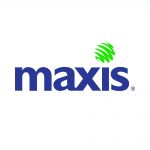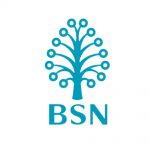Course Info
This course delivers an instructor-led breakdown of Microsoft PowerApps. Students will be taught how to design, test and publish new apps that work with a variety of data sources. We will take users through a selection of well-crafted lessons to help them build new applications for their business.
What Will I Learn From This Course?
Understand when to use PowerApps
Describe the components of PowerApps and their correct use
Create PowerApps from exsiting data sources
Brand PowerApps
Customise PowerApps beyond just using the automated wizards
Connect to a range of data sources from Excel to Azure SQL
Understand the difference between canvas apps and model-driven apps
Integrate PowerApps with other Office 365 systems – including Teams and SharePoint Online Administer and Maintain PowerApps
Methodology
Beginners who wish to customise their data entry forms in SharePoint right up to advanced users who need to use advanced formulas to deliver more bespoke actions to their apps.
Pre-requisites
No pre-requisites are required.
Target Audience
Beginners who wish to customise their data entry forms in SharePoint right up to advanced users who need to use advanced formulas to deliver more bespoke actions to their apps.
Course Outline for This Programme
An Introduction to PowerApps
- What is PowerApps?
- The benefits of apps
- How to get PowerApps
- Canvas Apps and Model-Driven Apps
- License Options and Costs
- Discover PowerApps with Templates
Getting Started with PowerApps
- Building a new app from a data source
- Add, edit and remove controls
- Intro to Formulas
- Testing an app
- App Settings
- Publish and Share Apps
- Version History and Restore
- PowerApps Mobile App
Branding and Media
- Less is more
- Duplicate Screens
- Fonts
- Screen Colours and Matching Colours
- Screen Backgrounds
- Buttons and Icons
- Hide on Timer
- Size and Alignment by reference
- Show and Hide on Timer
PowerApps Controls
- Text Controls for Data Entry and Display
- Controls – Drop downs, combo box, date picker, radio button and more
- Forms – Add and edit data in underlying data sources quickly
- Charts – present information in pie, line and bar charts
Data Sources and Logic
- Data Storage and Services
- How do I decide which database to use?
- Connect to on-premises data – Gateway
- What is Delegation?
- Specific Data Examples
• Displaying Data
Model-Driven Apps
- What is a model-driven app?
- Where will my data be stored?
- How do create a model-driven app
- Canvas vs model-driven summary
PowerApp Integration
- Embed PowerApps in Teams
- Embed PowerApps in SharePoint Online
- Start a Flow from a PowerApp
- Identify which users have been using PowerApps
Administration and Maintenance of PowerApps
- Reuse an app in another location (move from testing or development to production)
- Review app usage
- Prevent a user from using PowerApps
- Manage environments
Module 9: Extend Power Apps portals
- Introduction to Power Apps portals
- Access Common Data Service in Power Apps portals
- Extend Power Apps portals
- Build custom Power Apps portals web templates
Module 10: Integrate with Power Platform and Common Data Service
- Work with Common Data Service Web API
- Integrate Common Data Service Azure solutions
FAQs
Power Apps is a collection of apps, services, connectors, and data platforms that help you quickly create custom apps for your company’s requirements. You can easily create bespoke business apps with Power Apps that connect to your business data stored in several online and on-premises data sources (such as SQL Server, Microsoft 365, SharePoint, and Dynamics 365) or in the underlying data platform (Microsoft Dataverse).
PowerApps is intended for developers in the workforce as well as those wishing to begin a career in development or coding.
It will be helpful to have a basic understanding of Java programming and the Office 365 environment to learn PowerApps.
You will learn how to use PowerApps, describe the components of PowerApps, how to create PowerApps from existing data sources, Brand PowerApps, Customise PowerApps, how to connect to a range of data sources from Excel to Azure SQL, how to integrate PowerApps with other Office 365 systems – including Teams and SharePoint Online, administer and maintain PowerApps, and many other things.
Renganathan Palanisamy has extensive experience in both academic and corporate training arena which enables him to incorporate best practices of both training approach to ensure training delivery is effective and relevant. This is further strengthened by his involvement in various technology related collaboration with renowned players in the industry such as Microsoft, IBM and Oracle. During his service as a Programme Leader in KDU College Sdn Bhd, he was responsible for coordination, collaboration and delivery of courses offered by Sun Microsystems in partnership with Guidance View and as Authorized Sun Education Centre, Oracle under its Workforce Development Programme and Microsoft through its MSDN Academic Alliance Programme.
He started off his early days of involvement in IT industry professing strong inclination towards Java technology and the object oriented design and development practices. He was able to share his in-depth knowledge of the technology via several academic courses and workshops he conducted for students and academic staff alike. Later he ventured into database design and development with Oracle and eventually expanded to include Microsoft SQL Server as well as IBM DB2 and IBM Informix.
Currently his main focus is on delivering Data Management and Business Intelligence tracks which is strongly complemented by his exposure to non-Microsoft related technologies. He has strong understanding of .NET technologies and tools. His knowledge is seeked as evident in his presence at premier events such as Microsoft TechEd and his involvement in SQL PASS local group (SPAN). His technical skills coupled with know-how of training delivery techniques have earned him recognition amongst his peers and attendees of his training sessions. His specialty includes the ability to relate concepts derived from various technologies and ability to ensure smooth transition for trainees migrating to different technology. Resourcefulness is his trademark and this helps enhance the training experience of the attendees.
He is a dynamic and versatile individual. He is willing to take up new challenges to learn and has the ability to apply new skills in a short span of time. Other strengths include good time management, analytical skills, ability to present ideas in innovative ways and most importantly, a sense of responsibility.




